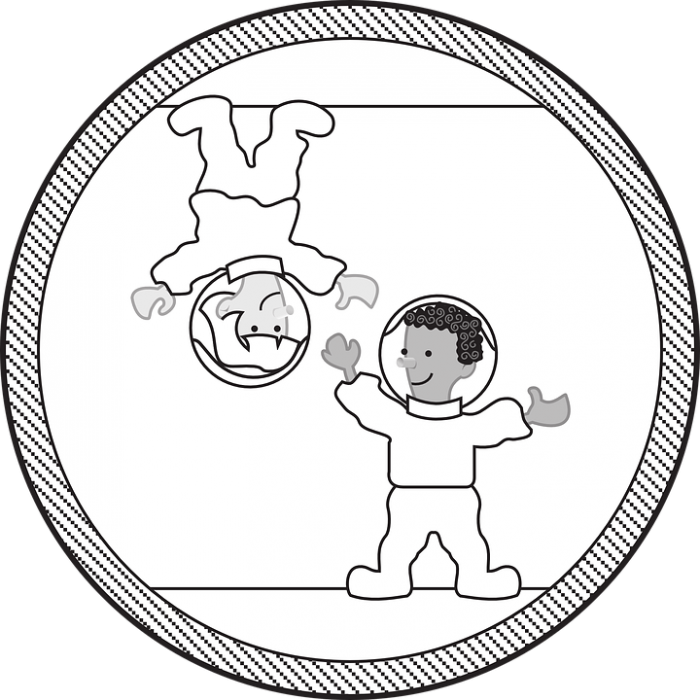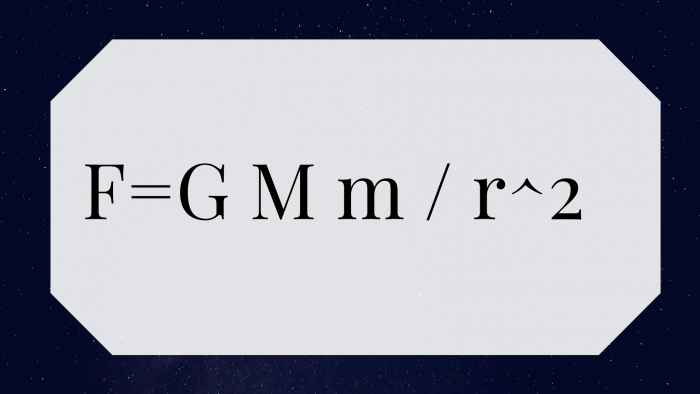
We all know that gravity is different on Mars versus the moon versus the Earth. The gravity on Mars is 3.711 m/s², which is just 38 percent the gravity on Earth. Earth’s gravity is 9.807 m/s², compared to the moon’s gravity of 1.62 m/s² or just 17 percent of Earth’s gravity.
Spanning hundreds of years in human history, people have always looked up at the stars with a fascination for what is beyond our Earth. After years of observing space through a telescope, humans were able to actually go into space, and in the 1960s we finally walked on the moon.
Now, in 2017 the possibility of actually getting to Mars is a tangible dream, and within the next couple of decades, man will once again reach a milestone of actually being on another planet. While we all have a lot of questions, Science Trends poses this question; just what is the gravity on the moon versus the gravity on Mars, versus the gravity on Earth? Well, check out this article to learn more.
That’s one small step for a man, one giant leap for mankind. – Neil Armstrong

Image source: NASA
What is the definition of gravity?

Image source: Pixabay
Before we continue on, it is important to define just what gravity is, and some terms associated with gravity.
Terms:
Gravity
- Gravity is the force (or pull) that a planet, or object, is drawn towards another object
- For instance, the sun has a gravitational pull for the planets in our solar system
- Gravity is also what keeps us firmly on Earth so we aren’t floating around everywhere even though it could be fun
- Think of gravity like this; bigass objects have more gravity than smaller objects
Law of Universal Gravitation
- Theory from Isaac Newton stating that every single object in the universe attracts other objects (depending on the mass)
- Basically, every planet, rock, and whatnot in the universe will attract other objects
- The earth has a gravitational pull to our moon, which rotates around us
- You can use Newton’s theory to find the force of gravity (formula and information for that is here)
- That formula is: F=G M m / r^2

Mass
- Mass is, in our case, the mutual gravitational pull between objects
- Earth has more mass than the moon, so the moon orbits us
- The sun has more mass than the Earth, so Earth orbits the sun
Okay, what is gravity then?
Now that you know the terms associated with gravity, the question remains of just what gravity is. Well, the answer is not very clear.
Scientists are not quite sure just what gravity actually is. I mean, it affects us daily in everything we do but it isn’t something we can easily define. The photo above may seem super random, but scientists believe that the universe actually works like the sheet. Einstein believed that the universe curved with the heaviest object in the middle, like the heavy ball. The other planets are pulled towards the object with the largest mass, which is the sun in our solar system. If smaller balls were added to the picture above then they would be pulled towards the larger because of the curve of the sheet.
Now, we can’t see the universe bend with the naked eye, but it is generally believed that it bends depending on mass. While we can’t see the curvature of the universe, scientists actually can see the light being emitted from massive galaxies bend. In the picture below (which was captured by the Hubble Telescope) you will see the phenomenon called gravitational lensing. Light actually curves around a large object (like a massive galaxy). Again, scientists have no idea why it happens, but we at least are starting to learn more about it because of technology (which if proven, Einstein said this in 1916, or over 100 years ago).
How Do We Calculate Gravity on Earth and other planets?
Just a refresher for the formula above, we use this formula to calculate gravity:
F=G M m / r^2
This formula is actually Newton’s theory of Universal Gravitation. We have all heard tales of the apple falling on Newton’s head and he came up with the theory of gravity, well this is the product of that story (the general consensus is that he had an apple tree and watched an apple fall, just not really on his head). He came up with this theory in 1666, but it wasn’t until 1796 that a man named Henry Cavendish actually was able to prove Newton’s theory. If you want more information about the history of the formula, and Newton himself, you can check it out here.
Now that we have gone over gravity, let’s finally look at the difference of gravity on Earth, versus the moon, versus Mars.
Note: surface gravity (g) is very dependent on the mass and the radius of a planet.
What is the Gravity on Earth?
It is important to note that gravity on the Earth actually varies depending on where you are (latitude and altitude affects gravity big time). Because of that, we have an average for gravity on Earth instead of an absolute number. The formula to calculate the gravity on Earth is shown below:
In this equation, we get that the radius of Earth is 6.38×10^6, and the mass of the Earth is 5.98×10^24. From there we plug that into the formula F=G M m / r^2.
So, the gravity of Earth comes out to 9.8 m/s^2. If you want to see all the steps taken to find this, you can check out this website (here) that gives a very good explanation of how we got the answer.
In 1901 it was determined that Earth should have a standard gravitational pull, so scientists determined that the Earth’s gravity is 9.80665 m/s^2. As you can see that is the answer that we calculated.
What is the gravity on the Moon?
Let’s preface this section by stating that the moon is considerably smaller than the Earth, therefore the gravity won’t be nearly close to the gravity that the Earth has.
The gravity on the moon is 1.625 m/s^2. That means that if you weigh 100 pounds on Earth, on the moon you would weigh a whopping 16 pounds since the gravity is about 1/6 (or 16%) of that on Earth.
Use this formula to find the gravity: F=G M m / r^2
Here’s what you need to know to plug into the formula:
Radius is 1.74 x 10^6 (r = 1740000)
Mass is 7.35 x 10^22
That finally comes out to 1.620 m/s^2.
Like we said earlier, finding the gravity is as simple as plugging the information into the formula.
What is the gravity on Mars?
“Mars is there, waiting to be reached.” — Buzz Aldrin
Just the same as the moon, Mars is smaller than the Earth, so, therefore, the gravity won’t be as much as it is on Earth. Finding the gravity on Mars is really the same as finding the gravity on Earth and the moon because you simply plug the information into the formula.
What we need to plug in:
Mass= 6.471 x 10^23
Radius= 3389.5 km
We get that Mars’ gravity is 3.711 m/s^2.
That means that if you weighed 100 pounds on Earth, you would only weigh about 38 pounds on Mars.
What are the implications of the gravity on Mars and the moon?
As some of y’all might know, people are getting ready to actually take manned missions to Mars to study it (and possibly even colonize it). Therefore, it is extremely important to know the gravity on the Red Planet, and if humans can safely stay there.
Gravity is something that humans need to have in order to function and survive. Doctors have weighed in (see the pun?) and have determined that the gravity on Mars would cause some health risks, such as developing bone weakness and muscles would begin to deteriorate. However, we have no idea of knowing how animals and mammals would react to being on Mars. Just the same as NASA launched monkeys and dogs into space before humans went up, they may very well do something similar on Mars. Some scientists believe that humans would actually evolve to be able to handle the stresses of Mars’ gravity, but we have no idea what the effect will end up being.
The moon, on the other hand, would not be a place humans could colonize (yet, at least). The moon’s gravity is not even remotely enough to where humans can stay for an extended length of time, so our bodies would do considerably worse on the moon than it would on Mars. There are talks in the scientific community about potentially making the moon a kind of launchpad for spaceships since it would require very little fuel to actually take off from the moon. Don’t expect that to be anytime soon, but there is a slight rumble about it.
Overall, gravity is something that we experience every second of every single day, but give it little to no thought. It makes it so we don’t trip and fall up into space, it gives us our weight (even if we wished it didn’t), and it is also how planes are able to fly. I am fascinated to learn how the gravity on Mars will affect humans and to be able to learn if a man (and women) can actually build colonies and sustain life on Mars. It will also be interesting to see if the moon can be used to launch spaceships into space for humans to explore more of the universe.









